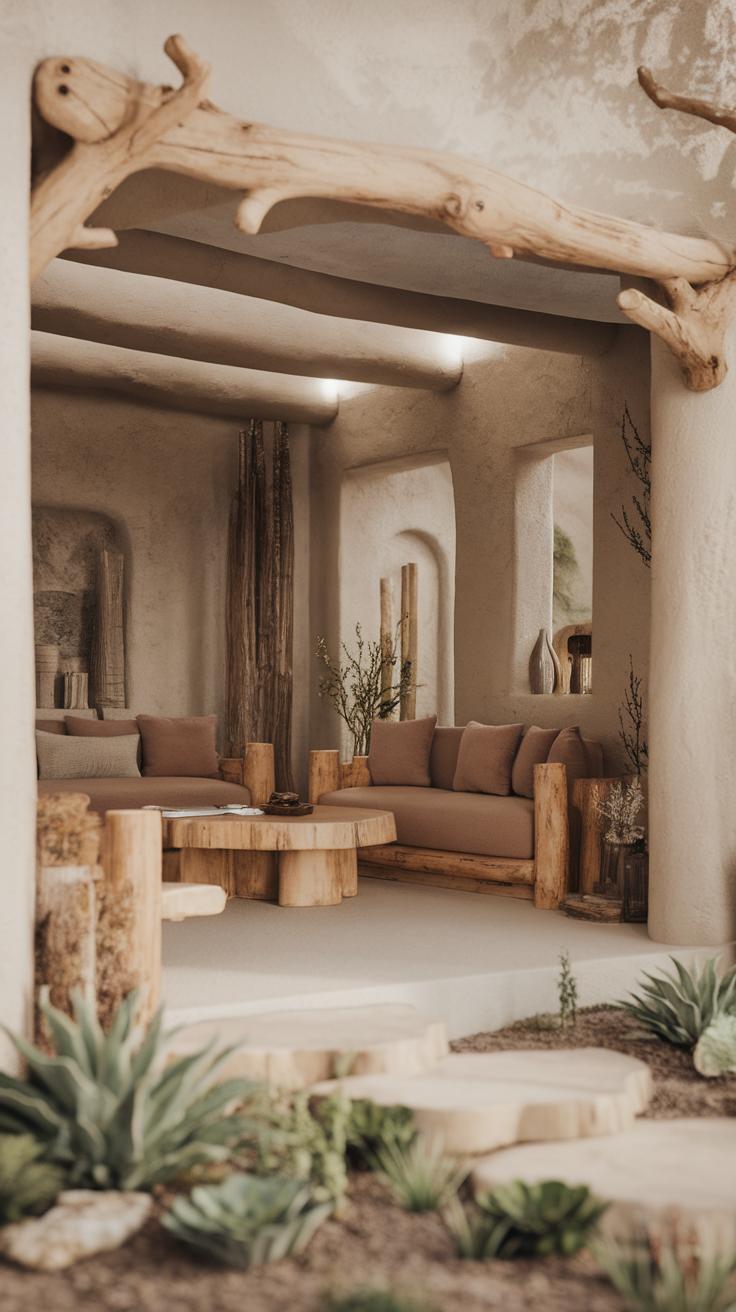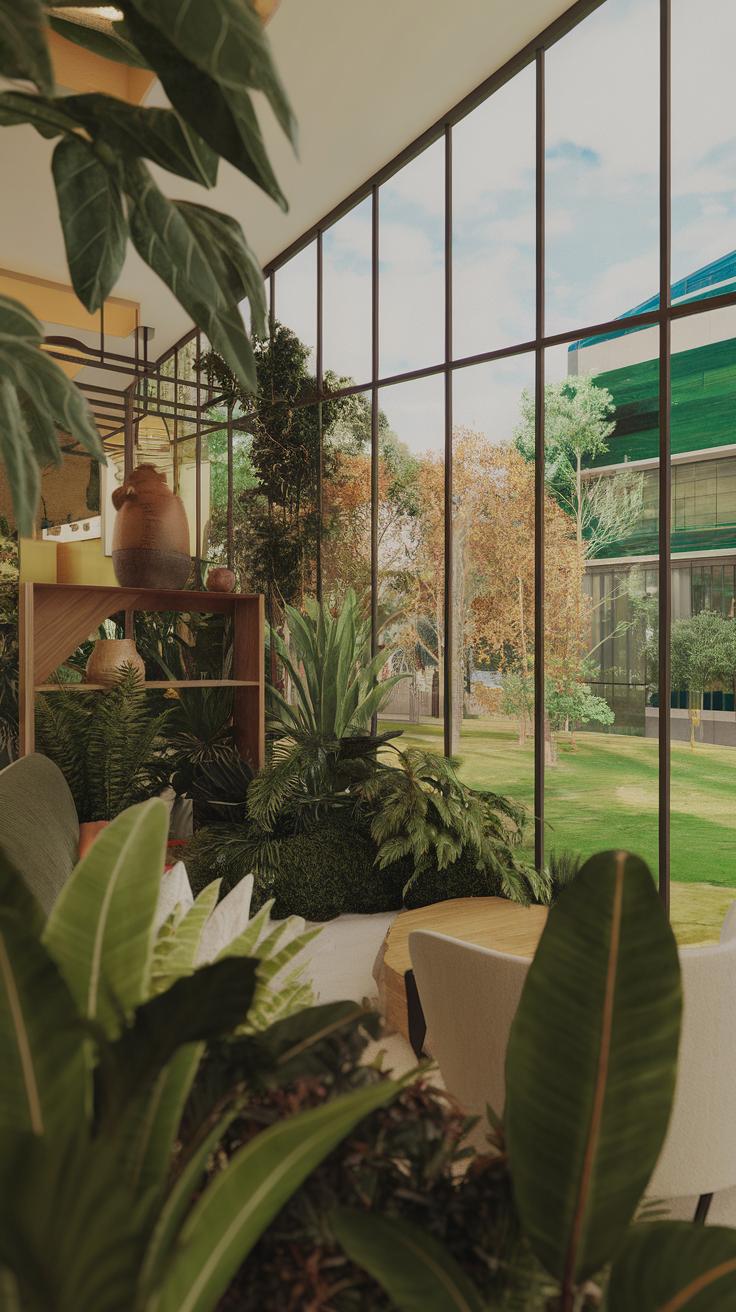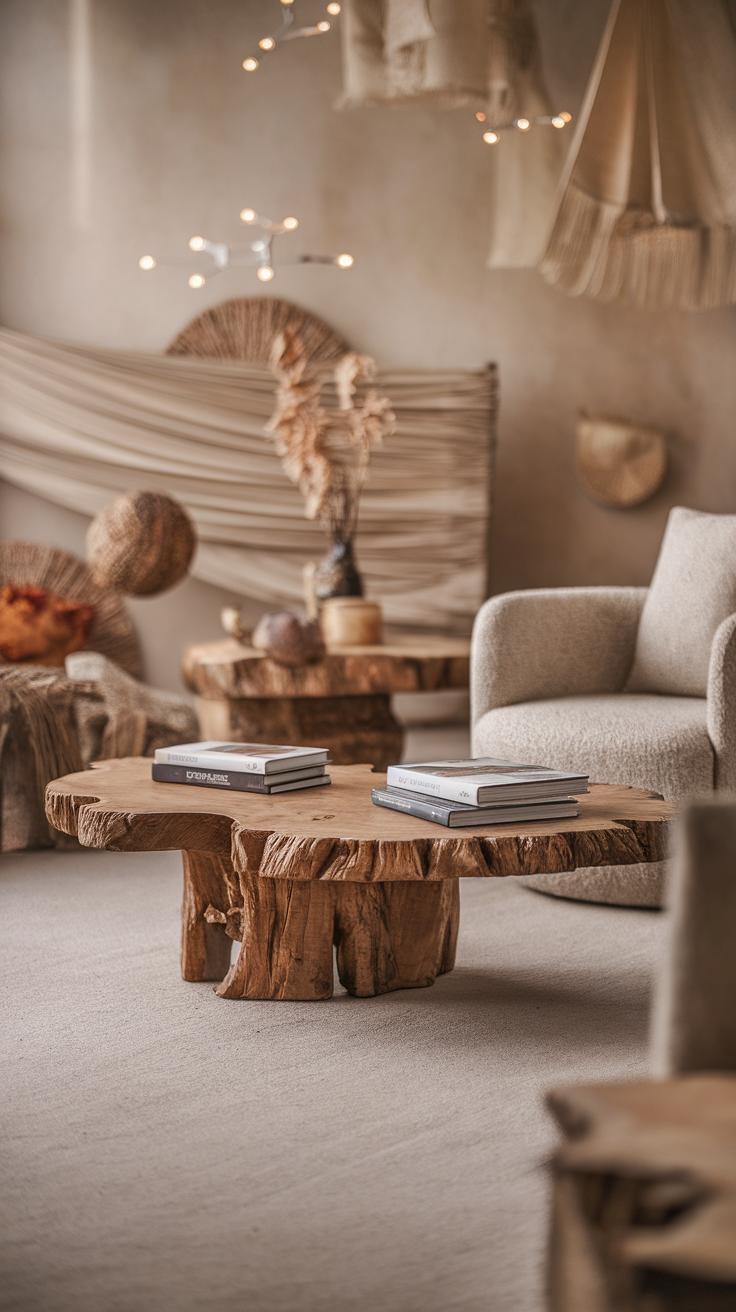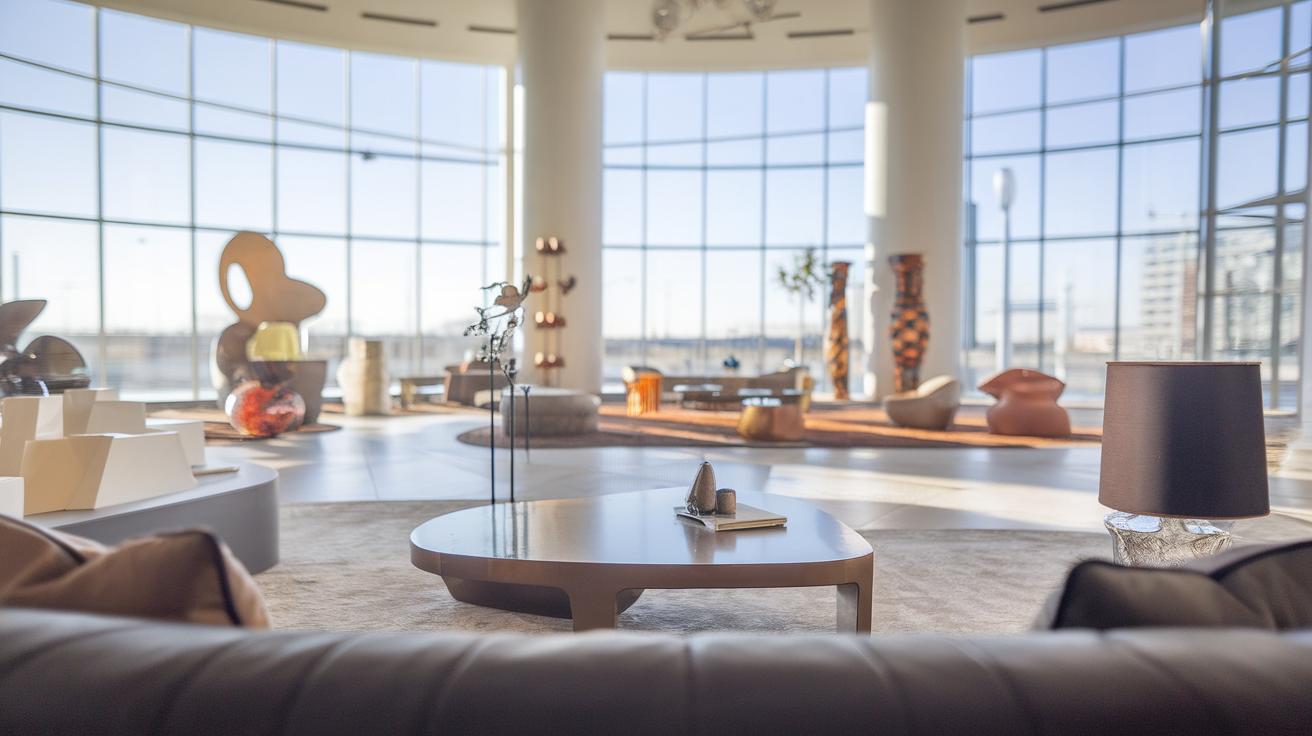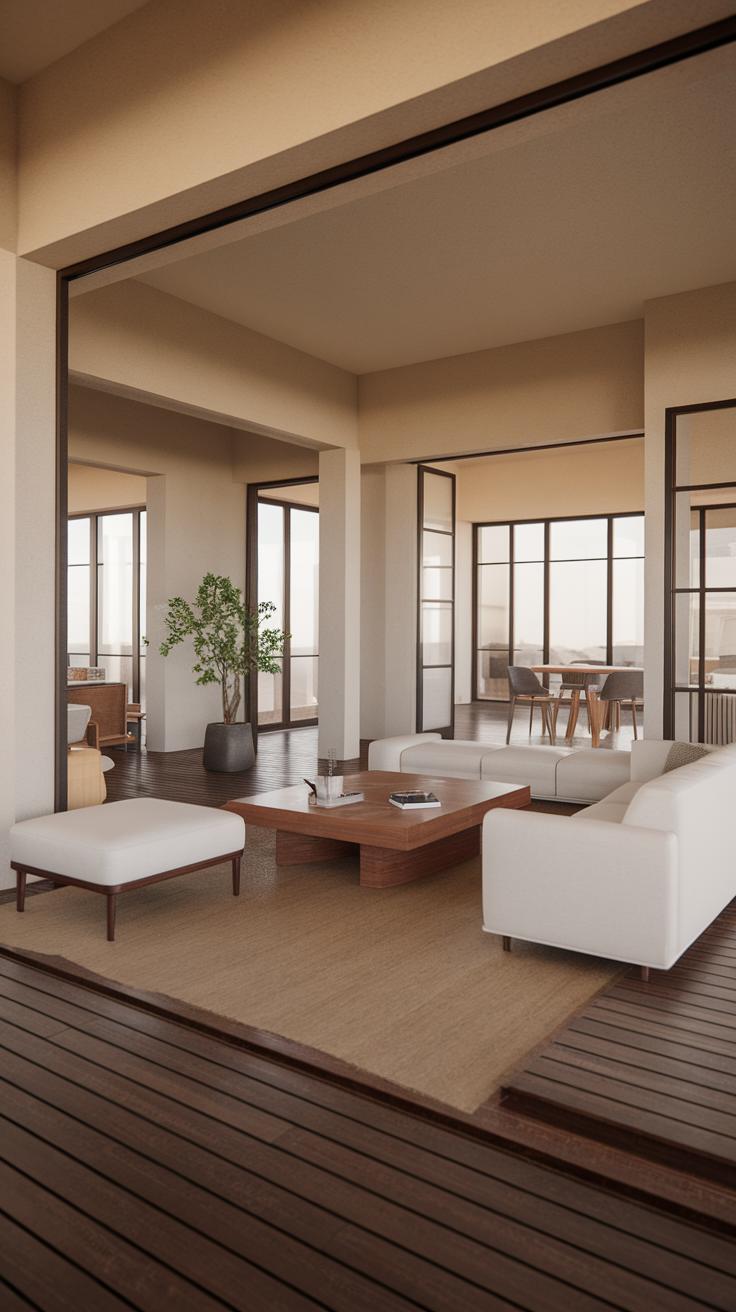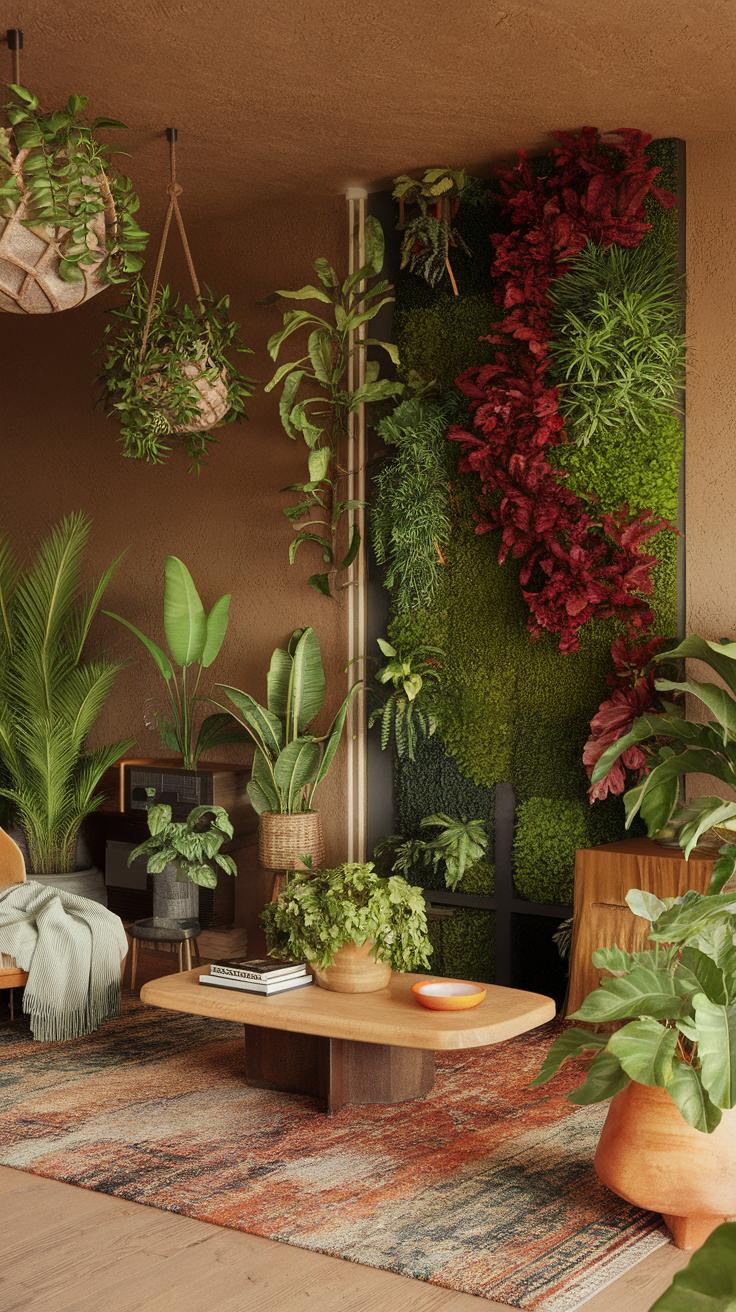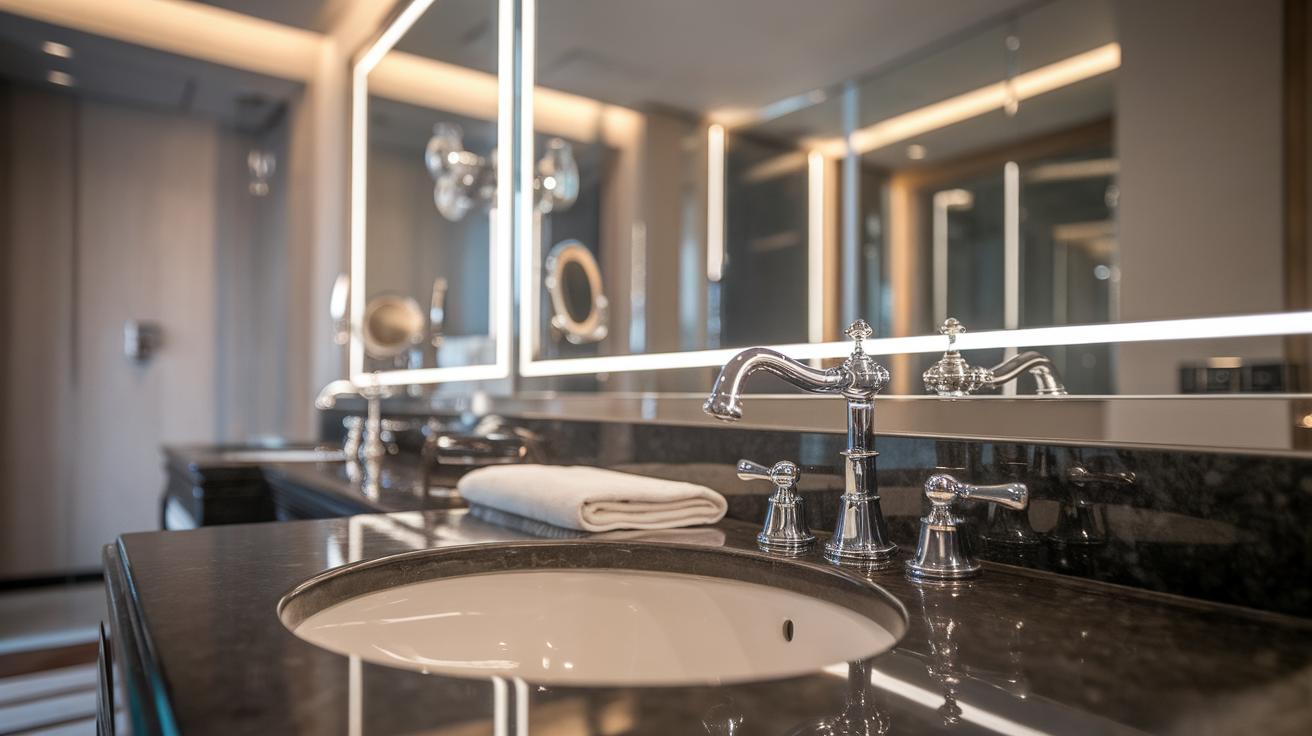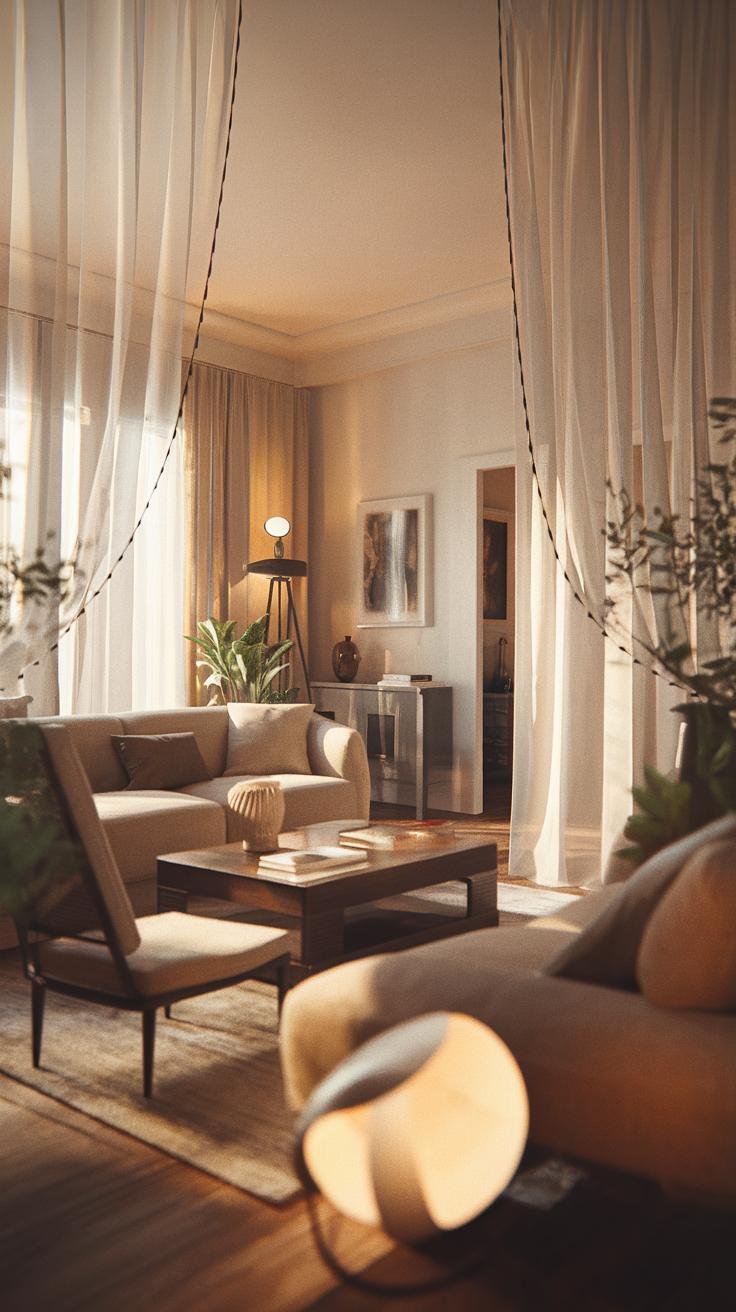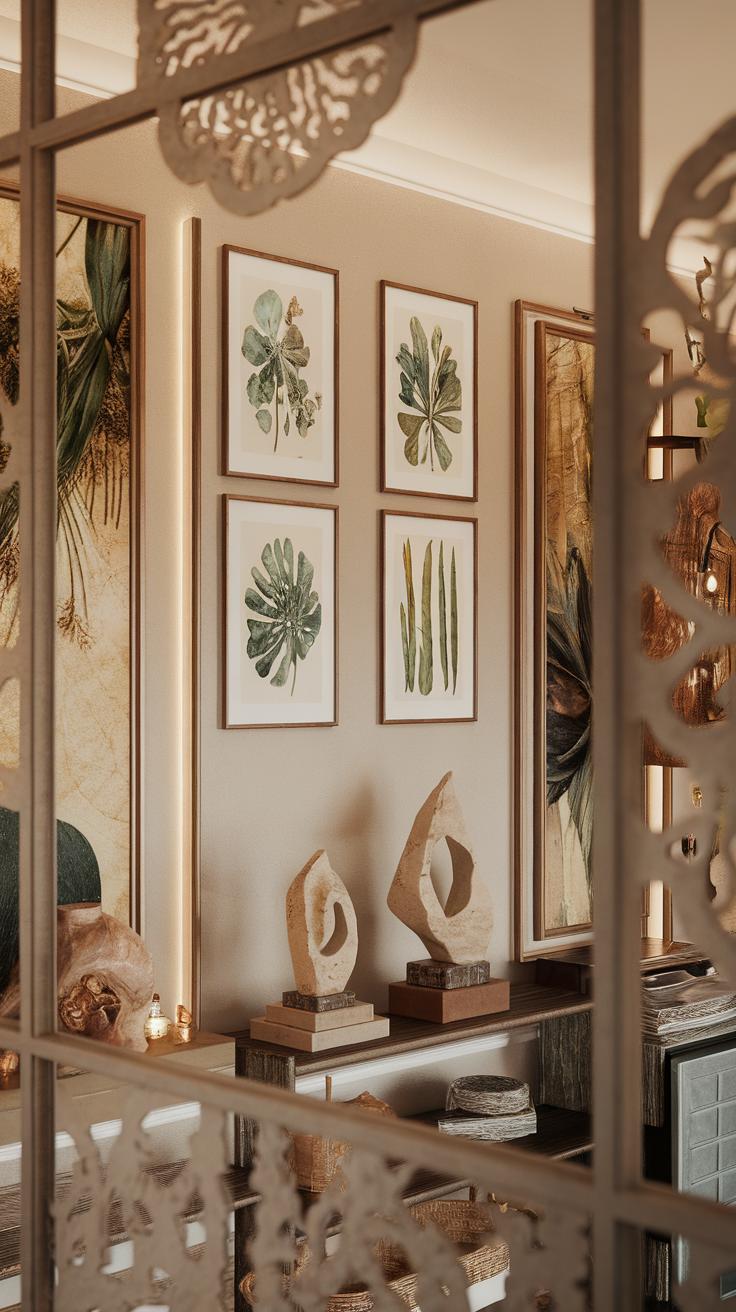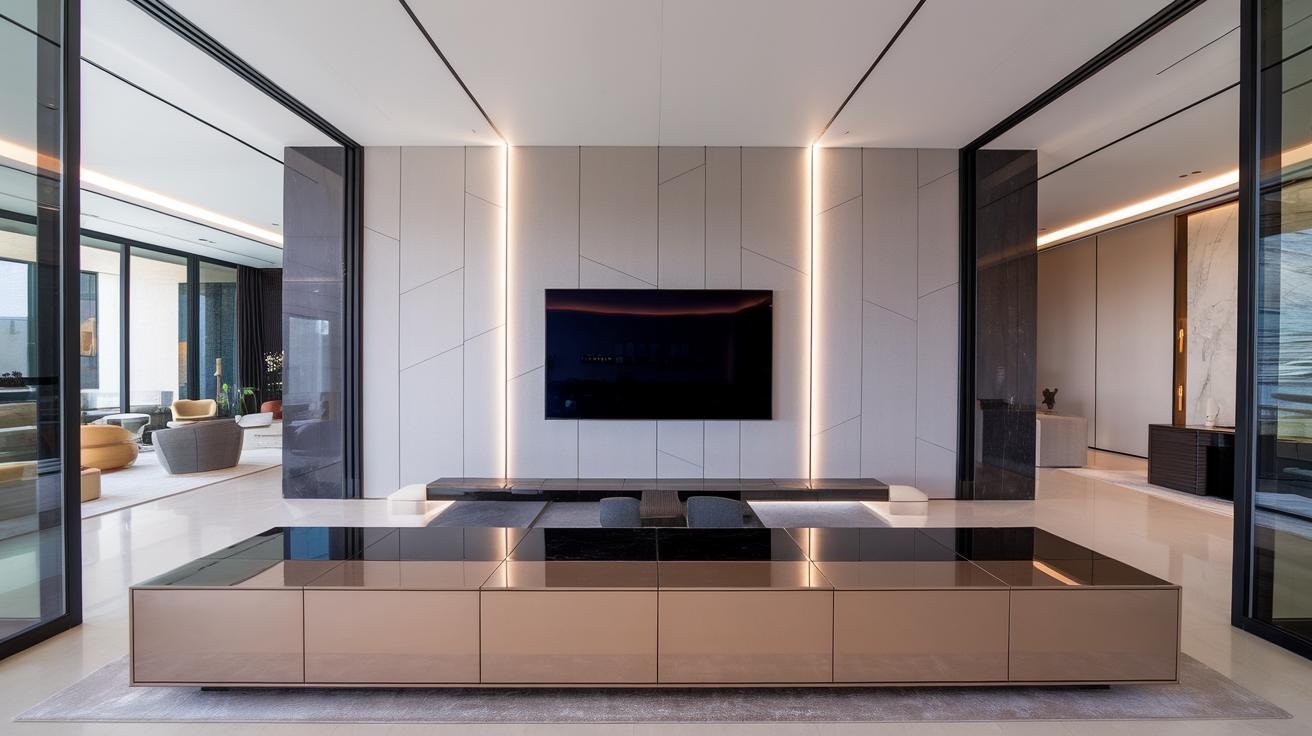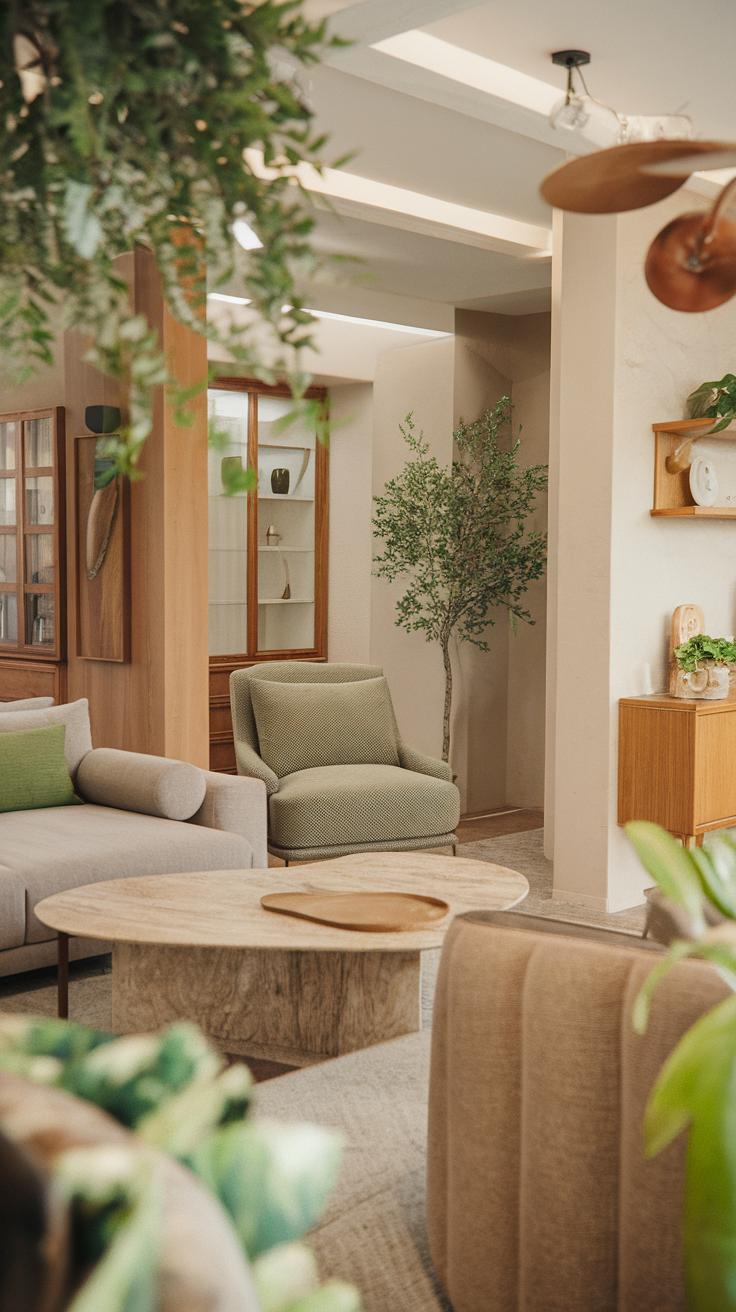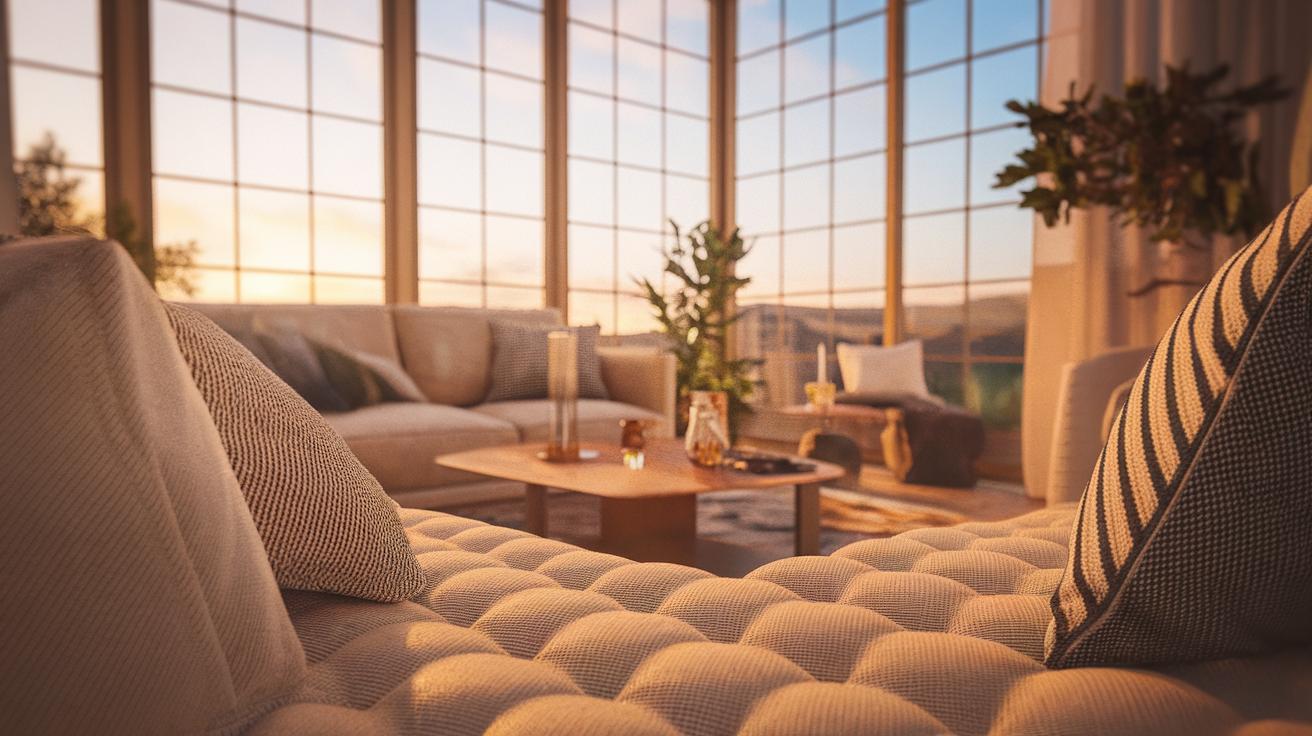Introduction
Creating an earthy living room design is a splendid way to bring the embrace of nature into your home, transforming it into a sanctuary of peace and comfort. This design approach emphasizes natural materials and soft colors, fostering a sense of tranquility. By integrating elements like wood, stone, and lush greenery, one can achieve a warm aesthetic that resonates with the surrounding environment. Such a design not only enhances the visual appeal of the space but also contributes to the well-being of its occupants, making it a popular choice for modern homeowners.
This blog post explores the principles of earthy living room design, exploring the roles of materials, colors, and textures while emphasizing the importance of biophilia—the innate human connection to nature. Readers will discover practical tips on selecting furniture, organizing layouts, incorporating greenery, and choosing suitable decor. Each aspect should come together to create a cohesive living space that mirrors the beauty of the natural world.
The Essence of Earthy Living Room Design
Fundamental Principles of Earthy Living Room Design
Creating an earthy living room revolves around the harmonious blend of natural materials, warm color palettes, and biophilic elements. Using sustainable materials such as reclaimed wood, stone, and natural fibers fosters a connection to nature. These components accentuate the organic charm of the space, offering a tactile experience that brings warmth and authenticity. Color plays an equally vital role; rich earth tones—such as terracotta, olive green, and sandy beige—instill a sense of comfort while evoking the outdoors. Incorporating biophilic elements like plants, water features, or natural light enhances this atmosphere, making the space inviting and tranquil. Together, these principles establish a cozy sanctuary, allowing inhabitants to feel grounded and rejuvenated in their environment.
Creating Cozy and Inviting Atmospheres
The essence of earthy living room design lies in its ability to cultivate warmth and intimacy. Natural textures, including driftwood, rattan, and soft wool, can be integrated through furniture, textiles, and decor. Layering these materials creates depth and visual interest, inviting touch and interaction. Lighting plays a critical part; using soft, ambient lighting can enhance the space’s cozy feel while highlighting natural textures. Furthermore, open layouts encourage flow and connection among the various elements. This thoughtful arrangement of materials and colors fosters an inviting atmosphere, allowing occupants to feel at peace and connected with nature, encouraging relaxation and social interaction.
Incorporating Biophilic Design Elements in Earthy Living Rooms
Understanding Biophilic Design
Biophilic design emphasizes the intrinsic human connection to nature, working to integrate natural elements within indoor environments. This concept is pivotal in creating earthy living rooms, where organic textures, earthy materials, and natural light play vital roles. Elements such as indoor plants, water features, and natural stone create an inviting atmosphere, fostering a sense of wellness. Utilizing these features effectively brings the breezy essence of the outdoors inside, enhancing the aesthetic and emotional appeal of the space.
Mental and Emotional Benefits
The psychological benefits of biophilic design are profound. Studies indicate that incorporation of natural elements can reduce stress levels, boost mood, and enhance creativity. Living rooms that feature green plants and nature-inspired decor promote serenity, allowing individuals to relax away from busy lifestyles. By integrating these biophilic elements, earthy living rooms transform into sanctuaries of comfort and tranquility, where one feels rejuvenated and connected to the environment even when indoors.
Furniture Choices for Earthy Aesthetics
Natural Materials and Organic Shapes
Selecting furniture that aligns with earthy living room designs requires an appreciation for natural materials and forms. Pieces crafted from wood, stone, and rattan create a warm, inviting atmosphere. For instance, choosing a reclaimed wood coffee table not only encourages sustainability but also adds character and a sense of history to your space. Seating options like a low-profile sofa upholstered in linen or organic cotton can enhance comfort while reinforcing the connection to nature.
Organic shapes further accentuate the earthy theme. Curvilinear furniture, such as round ottomans or sculpted chairs, softens hard edges and invites relaxation. Pairing these elements with plants and textiles in earthy tones, such as terracotta, olive green, and deep browns, creates cohesion and harmony within the living room. Embracing such furniture choices fosters a serene environment, mirroring the tranquility of the great outdoors.
Effective Layouts for Spacious Living Analyze Earthy Living Room Designs for Flow and Comfort
Optimizing Space Through Thoughtful Arrangement
Creating an inviting earthy living room requires a well-thought-out layout that promotes both flow and comfort. Begin by positioning larger furniture pieces, such as sofas and tables, in a way that encourages conversation and connectivity. For example, a U-shaped arrangement around a central coffee table not only defines the space but also facilitates interaction among guests. Consider including natural materials in your choice of furniture, like a reclaimed wood coffee table or a soft jute rug that adds warmth to the environment.
Enhancing Comfort with Visual and Natural Elements
Incorporate elements such as plants and artwork strategically to enhance the earthy aesthetic of your living room. Place greenery near windows for ample sunlight, which helps to create a seamless connection between indoor and outdoor spaces. Artwork depicting nature, such as landscapes or botanical prints, can serve as focal points that draw the eye and enrich the ambiance. The key lies in balancing these elements, ensuring that each piece contributes to the overall tranquility of the space while maintaining an effortless flow.
The Role of Greenery in Earthy Designs
Enhancing Aesthetics and Well-being
Incorporating plants into earthy living room designs serves as a bridge between indoor comfort and the natural world. The presence of greenery brings a vibrant, organic touch that harmonizes wonderfully with natural materials like wood and stone. Various plants can be strategically placed to create focal points or soften the room’s lines, adding depth and dimension to the space. From towering indoor trees to delicate hanging ferns, each selection can enhance the aesthetic appeal of the living room.
Beyond mere appearance, the psychological benefits of plants are significant. Studies indicate that greenery can reduce stress and improve mood, making the living room an inviting space for relaxation and socialization. The calming effects of observing nature can evoke feelings of tranquility and well-being, transforming daily routines into restorative experiences. Infusing life into your decor not only beautifies your surroundings but also nurtures a more serene and balanced environment.
Lighting That Complements Earthy Designs
Natural and Artificial Lighting in Earthy Spaces
Selecting the right lighting is key to enhancing the natural ambiance of an earthy living room. A combination of natural and artificial light ensures that the space feels connected to the outdoors. Large windows bring in sunlight, illuminating organic textures like wood and stone. Choosing sheer curtains can soften the light while maintaining the open feel, creating a serene atmosphere.
In terms of artificial lighting, opt for fixtures that reflect nature’s palette. Warm-toned bulbs mimic sunlight, enhancing earthy tones throughout the room. Fixtures made of natural materials such as rattan, bamboo, or raw metals add an organic touch. Accent lighting, such as table or floor lamps with earthy finishes, can create cozy nooks that invite relaxation. The goal is to reinforce the natural themes established by greenery and design elements, making your living room a tranquil retreat.
Art and Decor That Speak to Nature
Selecting Nature-Inspired Art and Decor
Choosing art and decor for an earthy living room involves selecting pieces that resonate with organic elements. Aim for artwork that showcases landscapes, botanical patterns, or wildlife to reinforce the connection to nature. Look for pieces crafted from natural materials such as wood, stone, or woven fibers; these not only reflect the outdoors but also add tactile warmth to the space.
Embracing organic shapes can significantly enhance the visual appeal of your decor. Curvy lines mimic natural forms found in plants and landscapes, creating a harmonious feel. Incorporating decor items like sculptures or wall hangings with earthy textures brings depth and interest, while choosing colors that echo those found in nature—greens, browns, and subtle blues—can unify the room’s aesthetic. This thoughtful selection ensures that your living space truly reflects the serene beauty of the natural world.
Implementing Nature Themes in Decor
Integrating nature themes into your living room decor transcends mere aesthetics; it fosters a tranquil atmosphere that nurtures well-being. Consider using textiles with leaf or floral prints on cushions or throws, as this can enhance the organic feel of the environment. Even small decorative elements, such as vases filled with dried flowers or twigs, evoke a sense of nature without overwhelming the space.
Incorporating handmade artisanal pieces can further deepen this connection. Not only do they support craftsmanship, but their unique shapes and finishes reflect the diversity found in nature. By thoughtfully curating your choices, you create an inviting oasis that merges indoor comfort with the calming essence of the great outdoors.
Maintaining an Earthy Living Room Care Tips for Organic Textures and Greenery
Cleaning Natural Materials Thoughtfully
Preserving the beauty of an earthy living room revolves around mindful maintenance of its natural materials. Wood surfaces and furnishings often require gentle cleaning methods to avoid damaging their finish. Use a soft cloth and a mixture of mild soap and water, ensuring to dry the surface immediately to prevent any moisture absorption. Stone elements, like slate or granite, benefit from pH-neutral cleaners, as harsh chemicals can compromise their integrity. Remember that textiles, especially those made from organic fibers, need to be cleaned with care — opting for eco-friendly detergents helps sustain their natural essence.
Managing Indoor Plants Effectively
Caring for greenery is vital in achieving an earthy ambiance. Start by choosing plants that thrive in the lighting conditions of your living space. Regularly check soil moisture levels; overwatering is a common mistake that can harm plant health. Implement a routine for dusting leaves, which not only boosts the plant’s appearance but also helps with photosynthesis. Fertilizing during the growing season with organic options will support robust growth. Finally, rotate your plants occasionally to ensure even light exposure, promoting balanced development and maintaining the lush, vibrant look that characterizes a nature-inspired living room.
Conclusions
Earthy living room designs offer a unique blend of comfort and connection to nature, creating spaces where people can thrive. By thoughtfully selecting natural materials, embracing warm color palettes, and integrating lush greenery, one can craft a harmonious environment that encapsulates the essence of nature. The biophilic concept not only elevates aesthetics but enriches the mental and emotional well-being of those who inhabit the space.
As we move towards more sustainable living practices, the incorporation of earthy elements in interior design will continue to resonate. By fostering an awareness of our surroundings and integrating nature into our homes, we not only enhance our living spaces but also the quality of our lives. Embracing earthy living room designs is more than just a trend—it’s a lifestyle choice that invites tranquility and joy into our everyday life.




